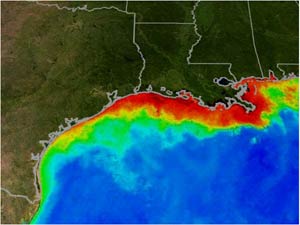
WATER QUALITY PARAMETERS
Total Suspended Solids | Nitrate-Nitrogen | Total Phosphorus | Ortho Phosphorus | E. coli Bacteria
NO2+NO3 – Nitrate + Nitrite
Nitrate and Nitrite are two forms of nitrogen. Nitrate is easily dissolved in water and more common in streams. Nitrite is rare because it is quickly changed by bacteria into nitrate or returned back to the atmosphere as nitrogen gas.
Nitrogen is an essential plant nutrient that exists in the environment in many forms. Nitrate-nitrogen is the oxidized form of nitrogen and is important because it is biologically available, highly mobile and is the most abundant form of nitrogen in Minnesota River Basin streams. Like phosphorus, nitrate can stimulate excessive and undesirable levels of algal growth in water bodies. In recent years, this problem has been particularly severe in the Gulf of Mexico where development of a hypoxia zone (hypoxia means “low oxygen”) has been linked to excessive amounts of nitrate carried to the Gulf by the Mississippi River. Reduced oxygen levels in the hypoxic zone, brought on by decomposition of algae, have damaged the shellfish industry and threaten the aquatic ecosystem of the Gulf Region. The Minnesota River has been identified as a substantial contributor of excess nitrate to the Mississippi River and the Gulf Region. In addition to over-stimulation of algae, elevated levels of nitrate in drinking water can cause methemoglobinemia, or blue-baby syndrome in infants.
 Gulf of Mexico hypoxic zone (NASA)
Gulf of Mexico hypoxic zone (NASA)Red/orange = low oxygen